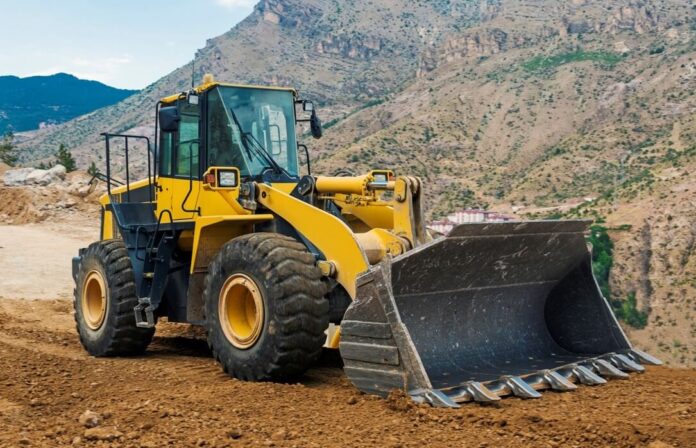In construction, efficiency, productivity, and versatility are paramount. The wheeled loader is one machine that embodies these qualities and drives construction projects forward.
Wheeled or front-end loaders are potent pieces of heavy machinery that play a pivotal role in various construction tasks.
These machines have become essential components of modern construction projects, from earthmoving to material handling.
Here’s how these powerful machines become the driving force behind construction projects and how the market for wheeled loaders for sale provides opportunities for acquiring these essential tools.
The Versatility of Wheeled Loaders
Digging and Levelling
Wheeled loaders excel in earthmoving and excavation tasks. Their robust buckets can efficiently dig and move soil, gravel, sand, and other materials.
The loaders’ strong lifting capabilities enable them to quickly scoop and load substantial amounts of material, streamlining processes such as foundation preparation, trenching, and grading.
Excavation is one of the primary tasks in construction projects, involving the removal of the earth to create a solid foundation. Wheeled loaders have robust hydraulic systems that enable them to dig deep into the ground easily.
Their articulated steering mechanism allows for precise control, making them suitable for digging various depths and widths of trenches. These loaders often come with features such as backhoe attachments, further enhancing their excavation capabilities.
Furthermore, wheeled loaders prove their worth in tasks requiring leveling the ground or creating a smooth surface. They can evenly distribute soil and aggregates, ensuring a uniform foundation for construction.
Whether for road construction, building foundations, or landscaping projects, wheeled loaders are crucial in achieving the desired ground conditions.
Backfilling and Compaction
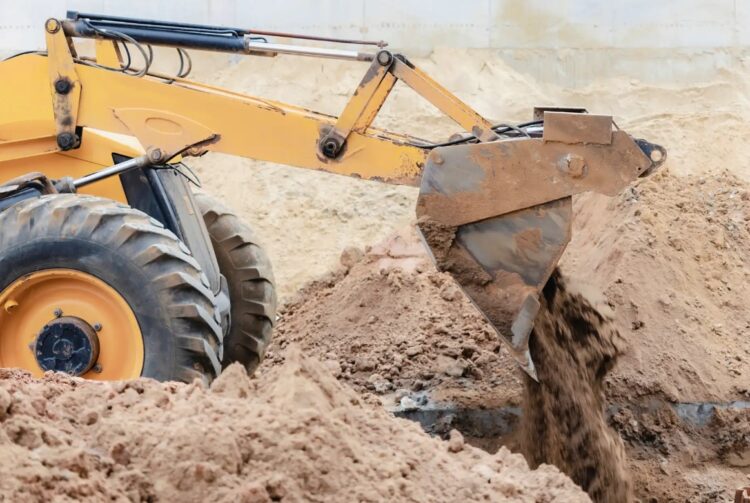
Backfilling and compaction ensure stability and proper ground support in construction projects. Wheeled loaders equipped with attachments like compactors and rammers can effectively compact soil and backfill trenches, contributing to the durability of structures and overall project integrity.
Backfilling involves refilling excavated areas, such as trenches and foundations, with compacted soil or other suitable material.
Wheeled loaders equipped with backhoe attachments can efficiently scoop and place the material, followed by the compaction attachment, to ensure proper settling. This process is essential for preventing soil erosion, providing proper drainage, and maintaining the structural integrity of the construction.
Moreover, wheeled loaders with compaction attachments contribute to achieving the desired soil density. Compaction is vital for preventing settling and ensuring that the ground can withstand the load imposed by the constructed structure.
Wheeled loaders with compactors can efficiently compact the soil in layers, resulting in a stable and robust foundation.
2. Efficient Material Handling
Aggregate and Bulk Material Transport
Wheeled loaders excel in loading and transporting various materials, including aggregates, gravel, sand, and debris. Their large buckets enable them to quickly load trucks, trailers, and other vehicles, reducing downtime and increasing the pace of material transport within the construction site.
Loading materials onto trucks or other transport vehicles is a fundamental task in construction. Wheeled loaders, with their powerful lifting capacity, can efficiently load large quantities of materials in a short amount of time.
This efficiency is especially valuable when transporting aggregates, essential for various construction applications, including concrete production, road building, and landscaping.
On-Site Material Distribution
Beyond loading vehicles, wheeled loaders are invaluable for distributing materials around the site. Whether distributing gravel for road construction or moving construction debris to designated areas, wheeled loaders contribute to the organization and optimize the work environment.
Efficient material distribution within the construction site contributes to a smooth workflow and minimizes delays caused by material shortages or disorganization.
Wheeled loaders with advanced control systems offer precise material placement, reducing manual labor and ensuring materials are positioned precisely where needed.
3. Manoeuvrability and Site Access
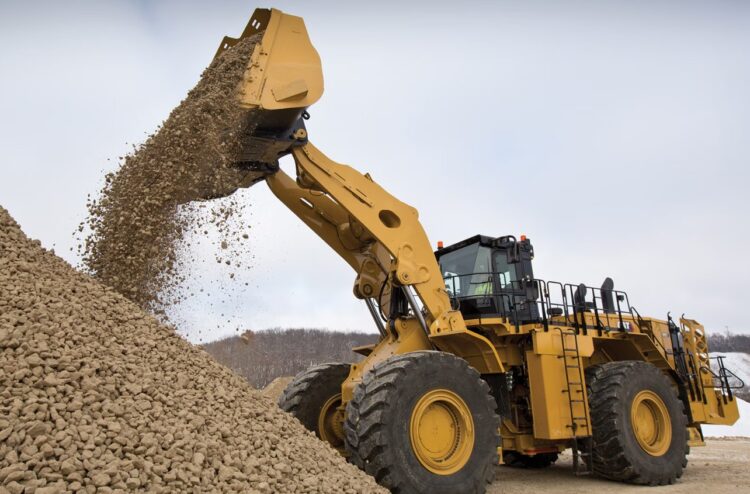
Navigating Tight Spaces
In urban construction projects where space is often limited, wheeled loaders shine. Their compact design and articulated steering enable them to navigate through tight alleys, confined spaces, and construction sites with limited access points.
This makes them indispensable for road repairs, building renovations, and urban infrastructure development.
Urban construction environments present unique challenges due to the limited space available for equipment and operations. Wheeled loaders, designed to maneuver in confined spaces, excel in such settings.
Their ability to pivot around a central point due to the articulated steering mechanism allows them to easily navigate through tight spots, making them the go-to choice for projects in urban areas.
Minimizing Disruption
Wheeled loaders contribute to minimizing disruptions in urban areas. Their ability to efficiently handle materials and perform tasks reduces the time construction equipment occupies public spaces, lessening inconvenience to residents and businesses.
Construction activities in urban settings need to be carried out with minimal disruption to the surrounding community. Wheeled loaders’ ability to swiftly load, transport, and distribute materials reduces the time required for construction tasks.
This speeds up the project and minimizes noise, dust, and traffic congestion, ensuring a smoother relationship between construction activities and the urban environment.
4. Speed and Productivity
Reduced Cycle Times
Wheeled loaders’ rapid loading and unloading cycles accelerate construction processes. With their high lifting capacities and quick operation, these machines minimize idle times, keeping construction workflows seamless and efficient.
Reducing cycle times is a key factor in enhancing construction productivity. Wheeled loaders’ ability to quickly load and unload materials onto trucks or within the construction site contributes to shorter cycle times.
This, in turn, increases the overall pace of construction, enabling projects to be completed within tighter schedules.
Bulk Material Handling
In projects requiring the movement of large volumes of materials, wheeled loaders shine. Their ability to scoop, transport, and dump bulk materials swiftly streamlines operations such as concrete pouring, asphalt laying, and debris removal.
Bulk material handling is a common requirement in construction, especially in tasks involving large-scale concrete or asphalt placement. Wheeled loaders with high-capacity buckets can efficiently move large amounts of material in a single cycle.
This reduces the required trips and contributes to consistent material distribution, improving construction quality.
5. Adaptable Attachments for Specialised Tasks
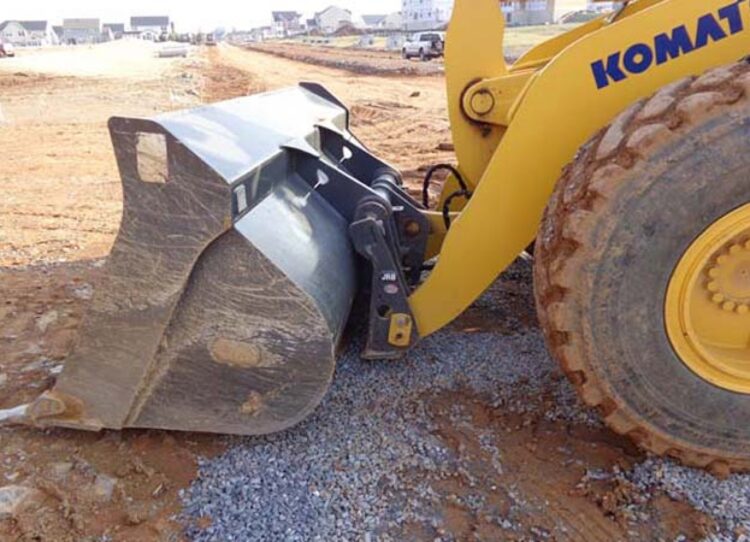
Grapples and Forks
Wheeled loaders with grapple attachments are well-suited for handling irregularly shaped objects, logs, and debris.
Similarly, attachments like forks enable loaders to lift and transport palletized materials, contributing to material handling versatility on construction sites.
Attachments significantly enhance the capabilities of wheeled loaders by allowing them to perform specialized tasks. Grapple attachments, for instance, are designed for tasks that involve irregularly shaped or bulky materials.
This could include handling tree branches, demolition debris, or even sorting recyclable materials on construction sites.
Similarly, fork attachments turn wheeled loaders into effective forklift alternatives. They are ideal for lifting and transporting palletized materials like bricks, blocks, and other construction supplies.
By having the ability to switch attachments, wheeled loaders become adaptable machines that can tackle a wide variety of tasks within the same project.
Snow Removal and Landscaping
During adverse weather conditions, wheeled loaders equipped with snow removal attachments efficiently clear roads, parking lots, and walkways.
Moreover, these machines find applications in landscaping tasks, such as moving soil, mulch, and plants, making them indispensable in construction and maintenance.
Wheeled loaders are critical in ensuring that construction sites and surrounding areas remain functional even during challenging weather conditions.
Attachments like snow plows and blowers enable these machines to clear snow from roadways, parking lots, and pedestrian walkways, ensuring safe access for workers and vehicles.
Beyond construction phases, wheeled loaders also have a role in landscaping tasks. From moving soil to spreading mulch and transporting plants, these machines aid in creating aesthetically pleasing environments.
Their adaptability to different attachments contributes to a more efficient and versatile approach to landscaping projects.
Conclusion
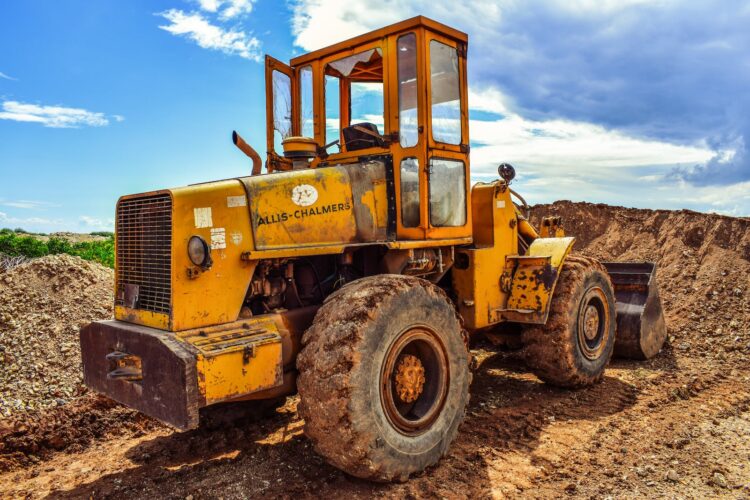
Wheeled loaders for sale are the unsung heroes of construction projects, driving efficiency, productivity, and adaptability. Their perks make them indispensable assets on modern construction sites.
From earthmoving to material distribution and from tight urban spaces to expansive job sites, wheeled loaders play a pivotal role in shaping construction projects and contributing to their successful completion.

